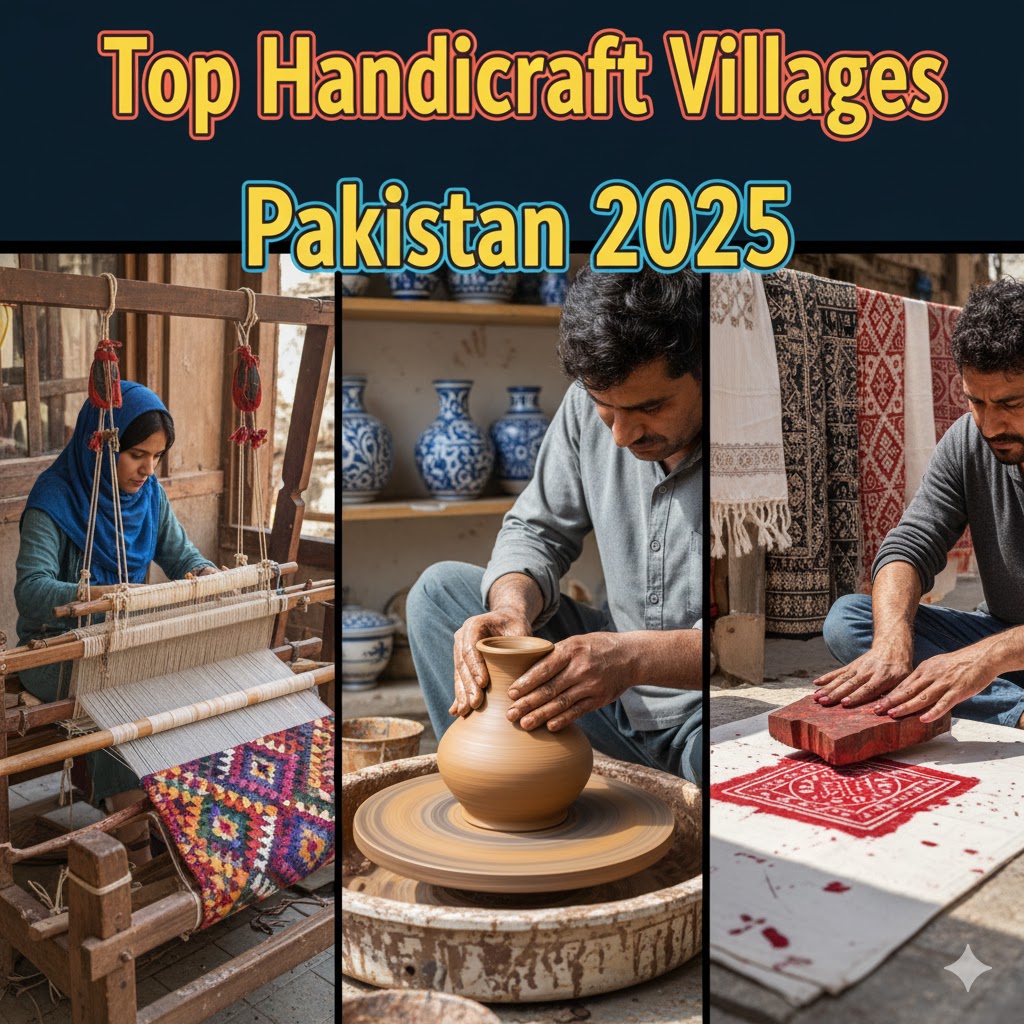Introduction
Pakistan is home to centuries-old artisanal traditions, passed down through generations in its villages. Exploring handicraft villages in Pakistan offers travelers a rare opportunity to witness artisans at work, learn age-old techniques, and purchase authentic souvenirs directly from local communities. From weaving in the north to pottery in the south, each village tells a unique story through its craft.
Visiting these villages not only supports local economies but also preserves cultural heritage, ensuring that these traditional skills continue for generations. This guide highlights the top handicraft villages to visit in 2025, combining immersive experiences with breathtaking landscapes.
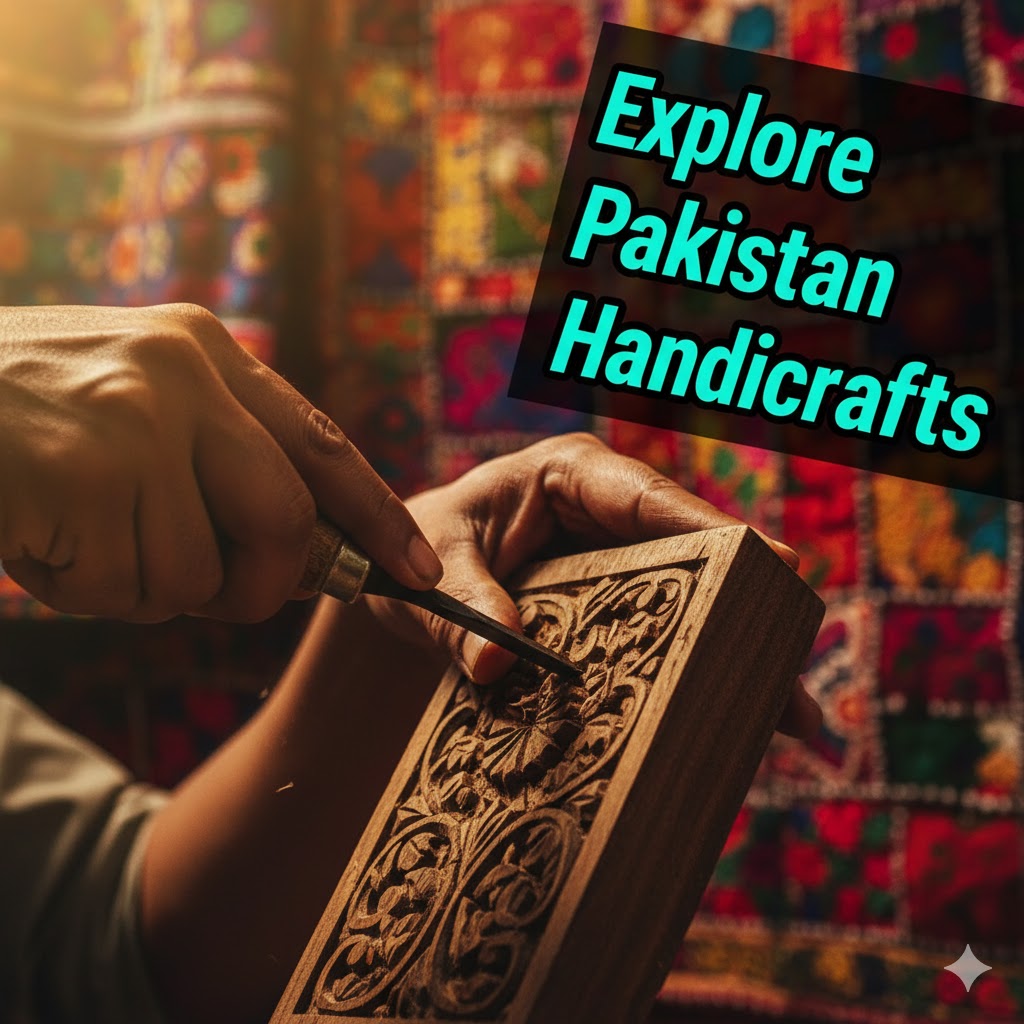
Pakistan is home to a rich tapestry of artisanal traditions, with each province and village preserving centuries-old skills passed down through generations. Visiting handicraft villages in Pakistan allows travelers to step into a world where creativity, culture, and community converge. From the northern mountains to the plains of Punjab and the deserts of Sindh, each village offers a unique insight into the country’s vibrant heritage.
Immersing yourself in these villages gives a deeper understanding of Pakistan’s cultural identity while supporting the local economy. Travelers can witness artisans at work, participate in workshops, and purchase authentic handcrafted souvenirs that cannot be found anywhere else.
This guide covers the top handicraft villages to visit in 2025, highlighting not just the crafts themselves, but also the stories, techniques, and traditions behind them.
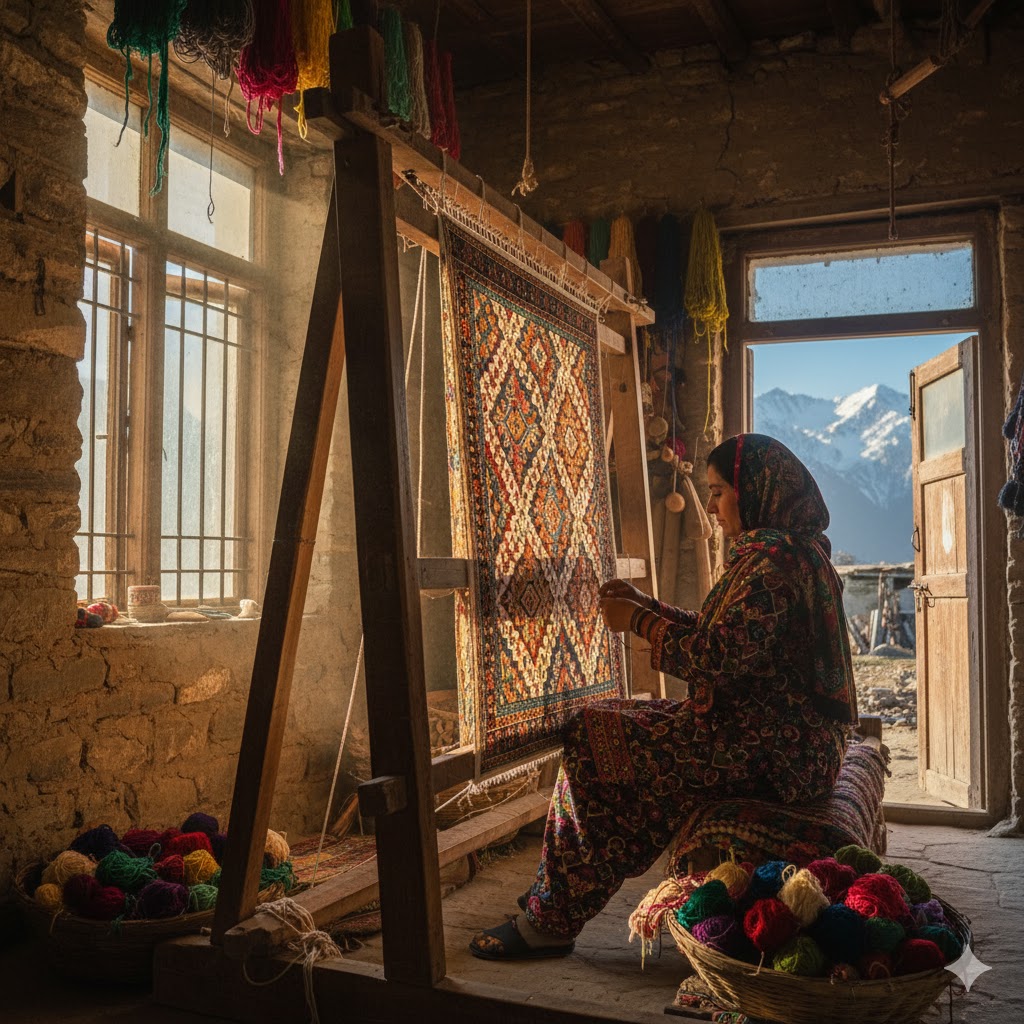
1. Shigar Valley – The Weaving Heart of Gilgit-Baltistan
Shigar Valley, near Skardu in Gilgit-Baltistan, is celebrated for its wool weaving and intricate embroidery. The valley’s high-altitude climate produces soft, high-quality wool, making it perfect for shawls, rugs, and warm clothing.
Artisan Insights
Local weavers, often women, follow techniques handed down for generations. Looms are typically wooden and manually operated, and natural dyes derived from plants give the fabrics their vibrant hues. An elder weaver, Mrs. Gulnaz, explains:
“Each thread tells a story — the mountains, the rivers, our lives. We weave not just cloth, but memories.”
Visitor Experience
- Observe weavers at work in family-run workshops.
- Participate in dyeing wool using natural methods.
- Purchase handwoven Pashmina shawls directly from artisans.

Local Tip: Visit during spring festivals to see shawls and embroidered garments displayed during village celebrations.
Must visit: Explore Kalash Cultural Adventures
Source: Gilgit-Baltistan Tourism
2. Multan – Blue Pottery and Ceramic Excellence
Known as the City of Saints, Multan in Punjab also boasts centuries-old pottery traditions. The city is famous for its blue glazed ceramics, often decorated with floral patterns and geometric designs.
Artisan Insights
Master potters like Mr. Imran Khan, whose family has been making pottery for over 100 years, explain the process:
“Every curve, every stroke is precise. The clay is alive — it reacts to our hands. It’s a dialogue between man and earth.”
Visitor Experience
- Witness pottery wheels in action and watch artisans shape bowls, vases, and tiles.
- Learn hand-painting techniques during workshops.
- Explore bustling bazaars such as Hussain Agahi Bazaar for souvenirs.
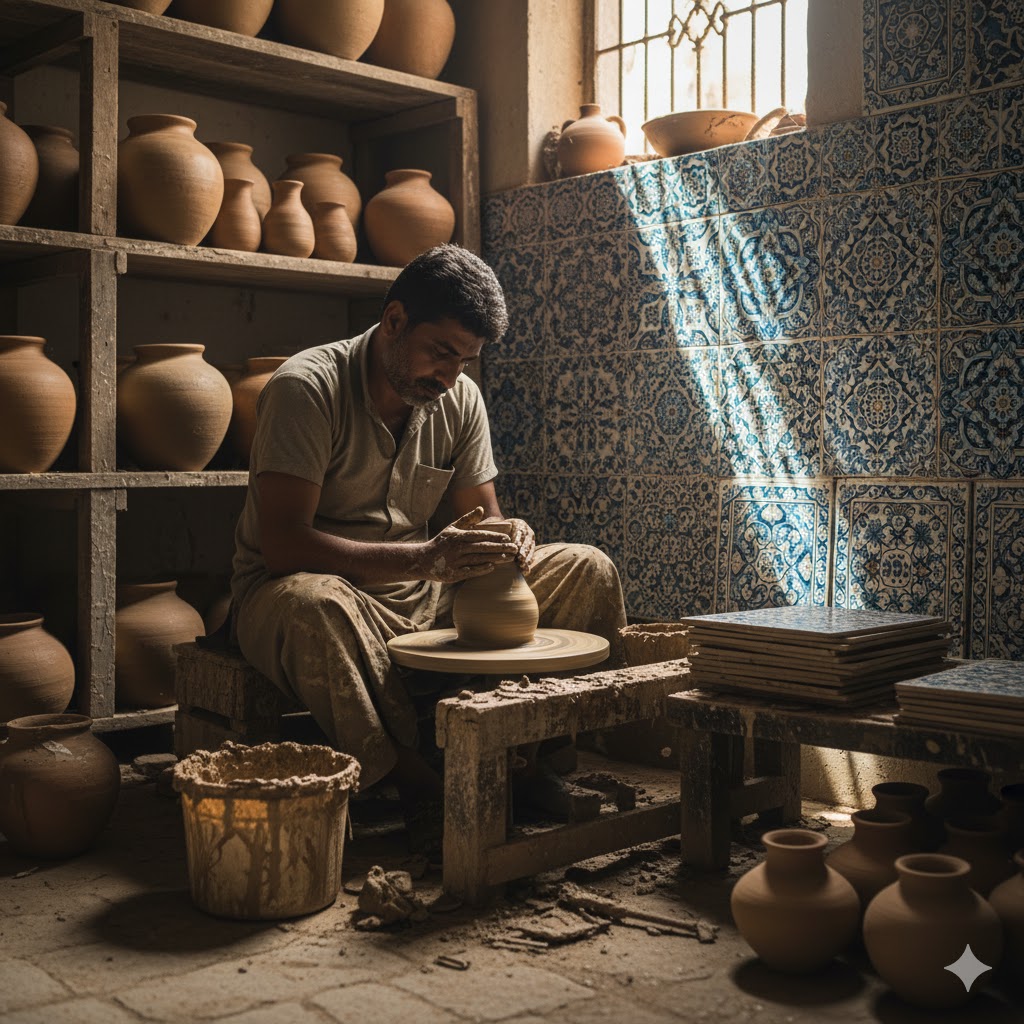
Local Tip: Attend the Multan Craft Festival in November to see a wide range of local pottery.
3. Chiniot – Masterpieces in Wood Carving
Chiniot is renowned across Pakistan for its wood carving and furniture making, often showcasing Mughal-inspired floral and geometric motifs. Village workshops produce everything from intricately carved doors to chairs, tables, and decorative panels.
Artisan Insights
Mr. Ahmed, a master carver in Chiniot, explains:
“Wood has a soul. When we carve, we release its story. Every petal and curve is a part of our heritage.”
Visitor Experience
- Watch master carvers create detailed designs on furniture and panels.
- Try your hand at carving with guidance from local artisans.
- Visit village workshops to buy decorative items directly from the creators.
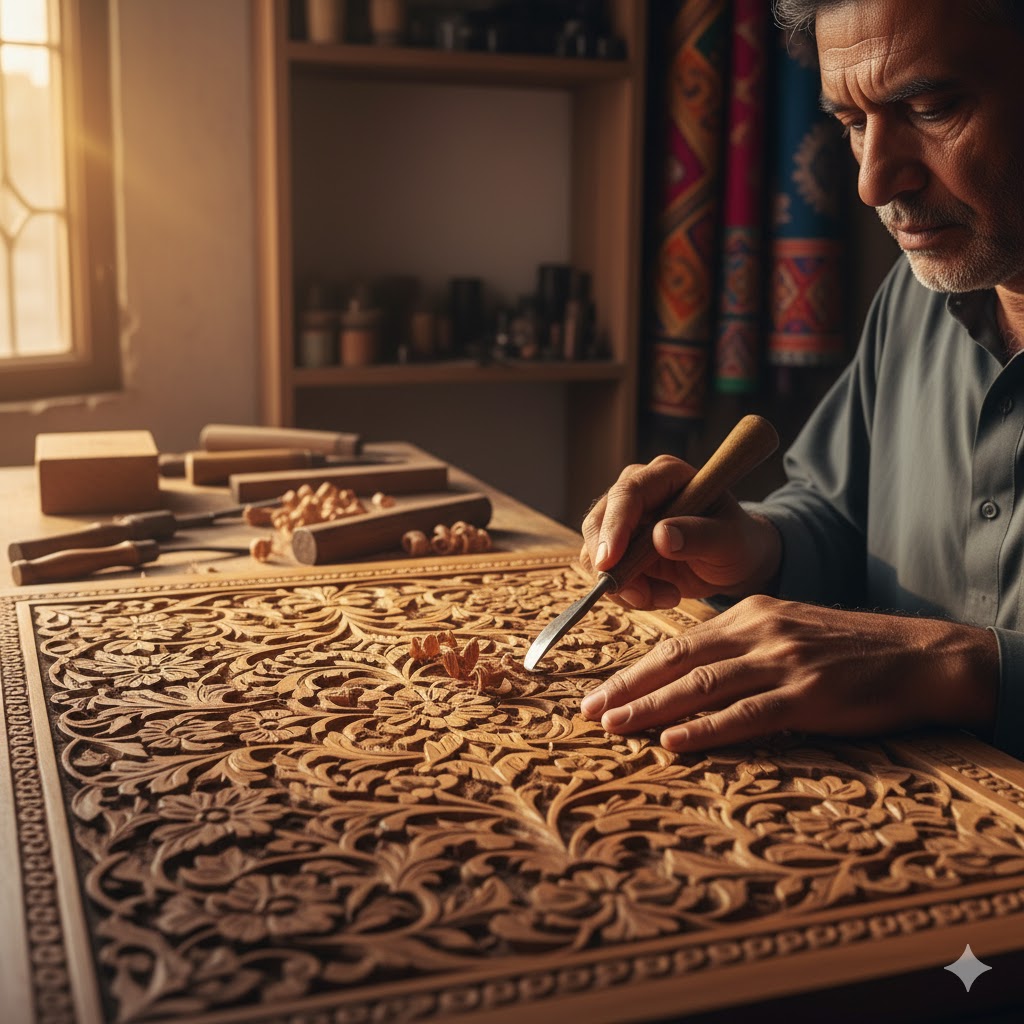
External Link Suggestion: Pakistan Tourism Development Corporation
4. Hunza Valley – Beads, Gemstones, and Embroidery
Hunza Valley, in the northern mountains, is celebrated for beadwork, gemstone jewelry, and traditional embroidery. The valley’s semi-precious stones and intricate embroidery are popular with collectors and tourists alike.
Artisan Insights
Mrs. Salma, a Hunza artisan, shares:
“Each bead is chosen with care, reflecting the colors of our mountains and skies. Jewelry here carries the spirit of the valley.”
Visitor Experience
- Participate in workshops to make bead necklaces and bracelets.
- Observe embroidery being done on traditional clothing.
- Learn about the cultural symbolism behind patterns and gemstone placement.
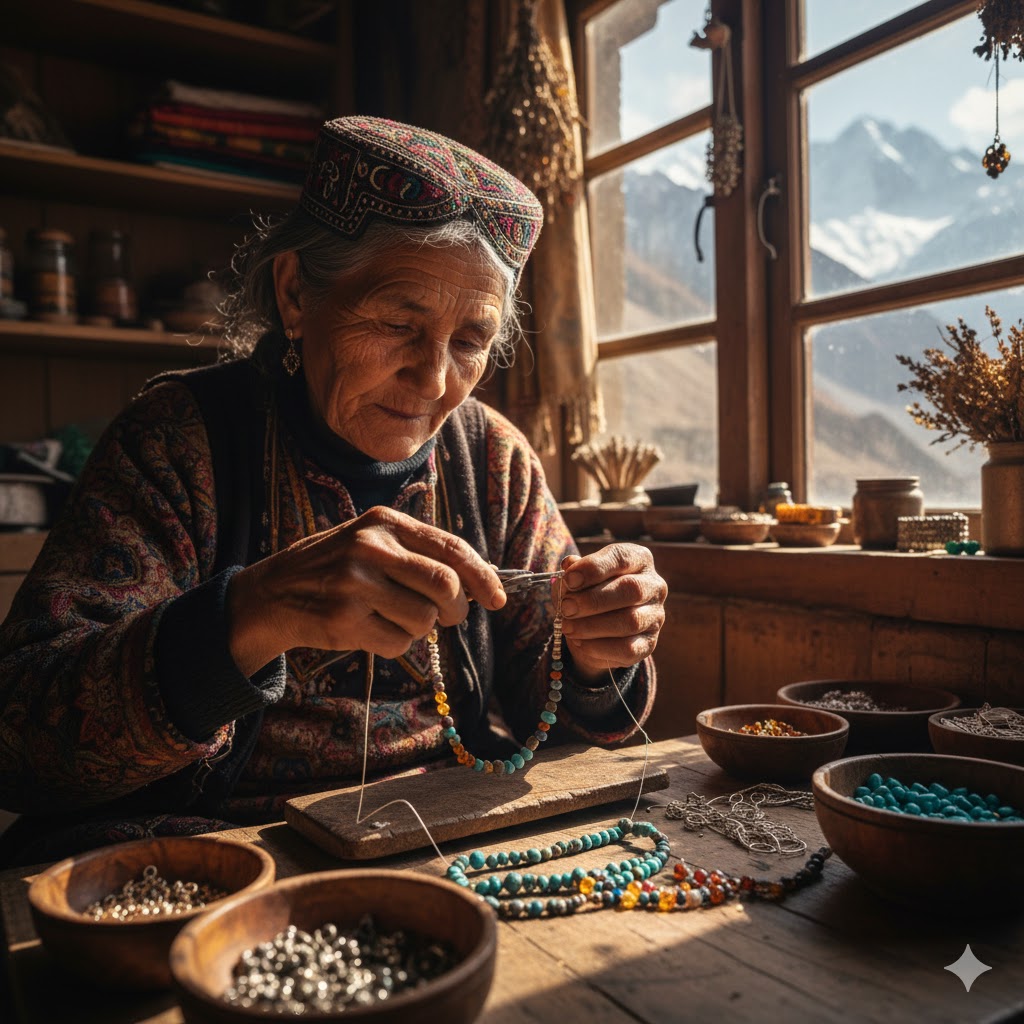
Local Tip: Combine your handicraft visit with a trek through Hunza Valley for scenic and cultural immersion.
5. Islamabad – Lok Virsa Heritage Village
Lok Virsa Heritage Village in Islamabad is a living museum replicating Pakistan’s diverse handicraft villages. While not a traditional village, it provides a comprehensive view of crafts from all provinces.
Visitor Experience
- Watch live demonstrations of weaving, pottery, wood carving, and miniature painting.
- Engage with artisans and purchase authentic crafts.
- Attend workshops for immersive learning.
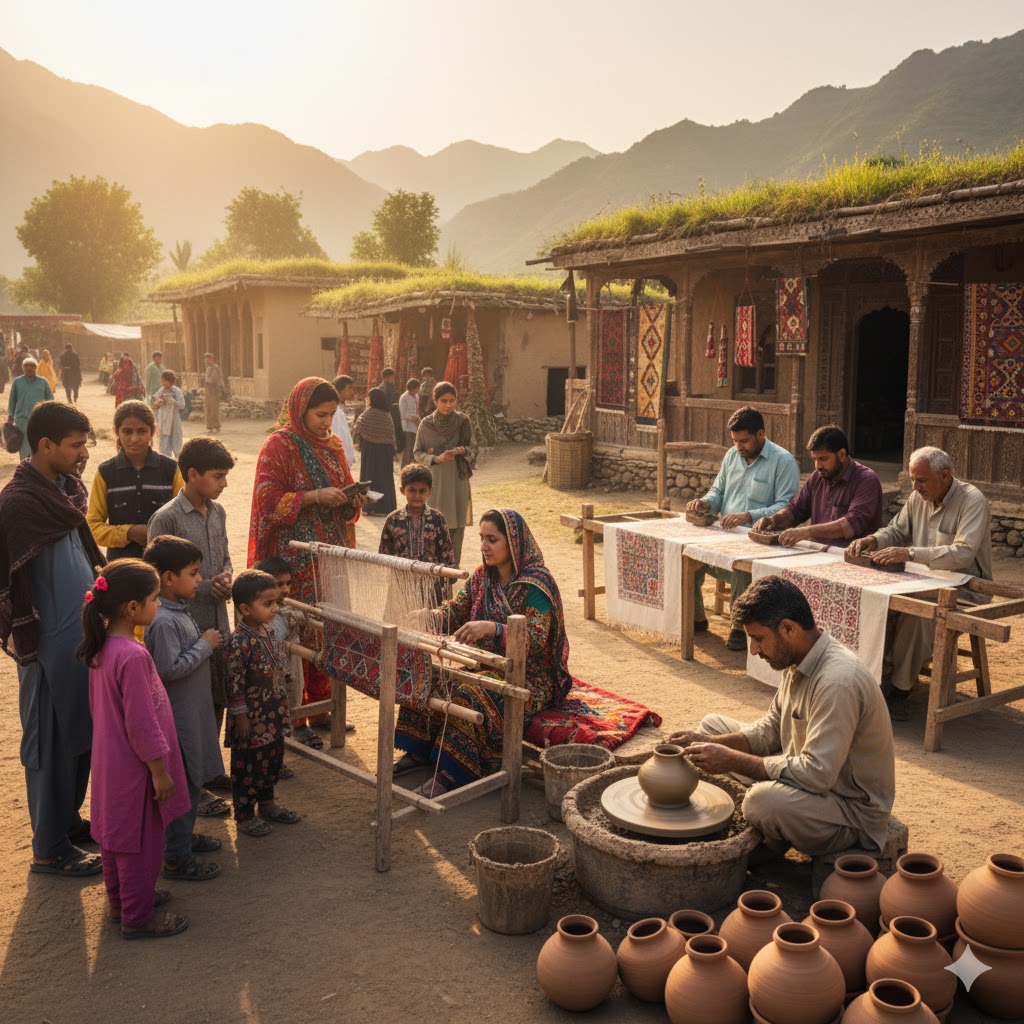
Internal Link Suggestion: Top 10 Adventure Treks in Pakistan
6. Balakot & Kaghan Valley – Wool and Embroidery
The northern villages near Balakot and Kaghan are known for their hand-spun wool and embroidered garments, especially winter wear.
Artisan Insights
Mr. Tariq, a local Balakot weaver, explains:
“Our wool comes from the hills. Every stitch is made with care. These are garments that keep not just the body warm, but our culture alive.”
Visitor Experience
- Watch artisans spinning and dyeing wool using natural dyes.
- Learn basic embroidery and weaving techniques in workshops.
- Purchase hand-knitted shawls, sweaters, and embroidered scarves.
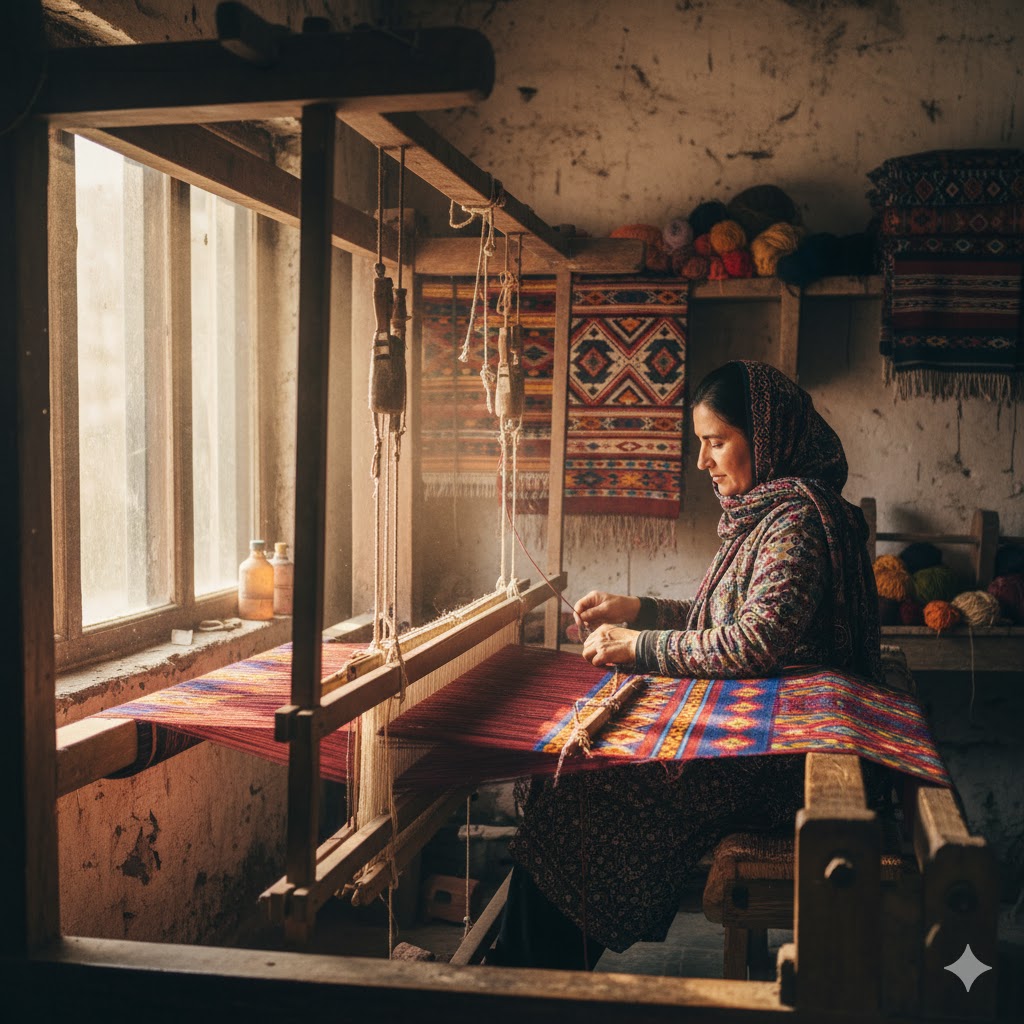
7. Sindh – Ajrak Printing Villages (Hala & Thatta)
Sindh is famous for Ajrak block printing, a centuries-old craft using hand-carved wooden blocks and natural dyes. Villages like Hala and Thatta produce vibrant textiles that are highly sought after.
Artisan Insights
Mr. Farooq, an Ajrak master, shares:
“Each block tells a story. The patterns are our history, our beliefs, our pride. Printing Ajrak is a meditation as much as it is craft.”
Visitor Experience
- Learn block printing techniques in interactive workshops.
- Observe dyeing, stamping, and drying of Ajrak fabric.
- Take home your personally printed Ajrak as a unique souvenir.
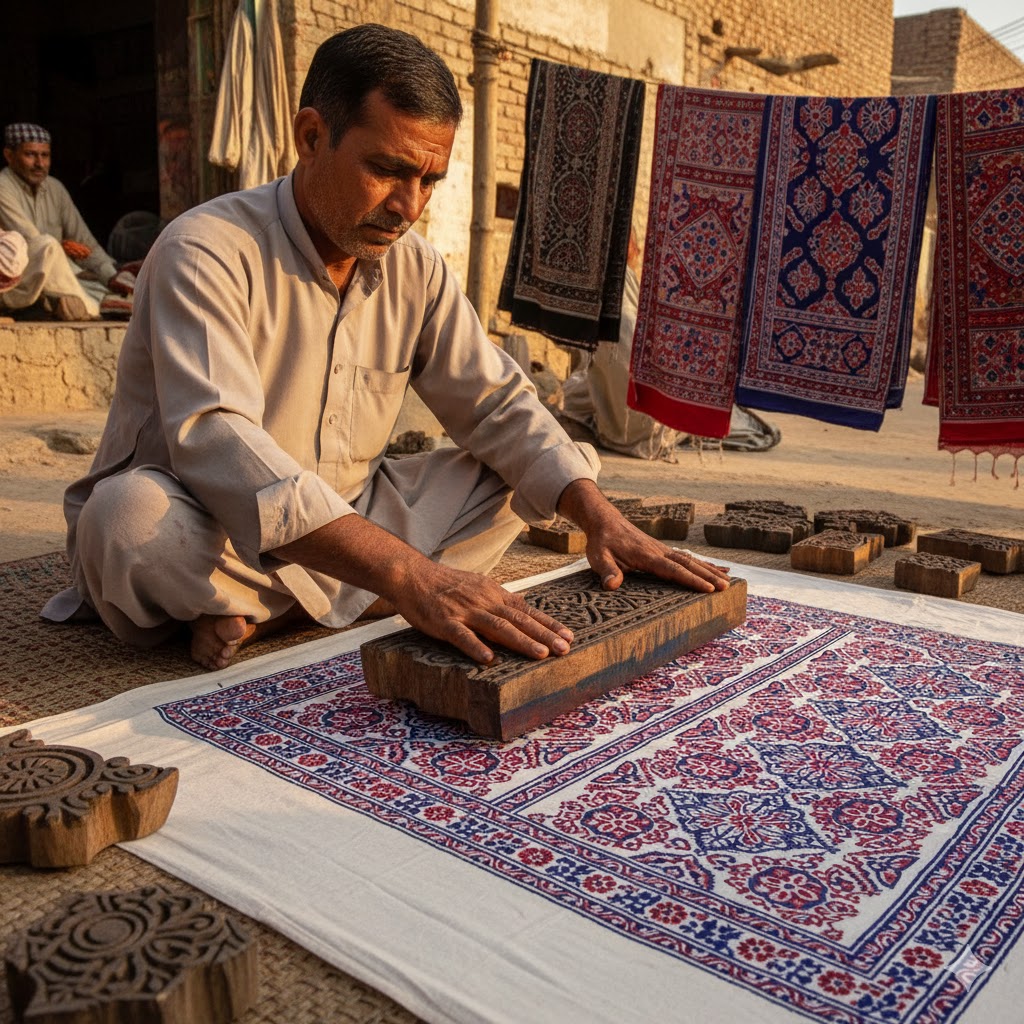
External Link Suggestion: Sindh Tourism
8. Additional Hidden Craft Villages
Skardu – Carpet Weaving
Skardu villages are known for hand-knotted carpets and rugs, using wool sourced from local sheep.
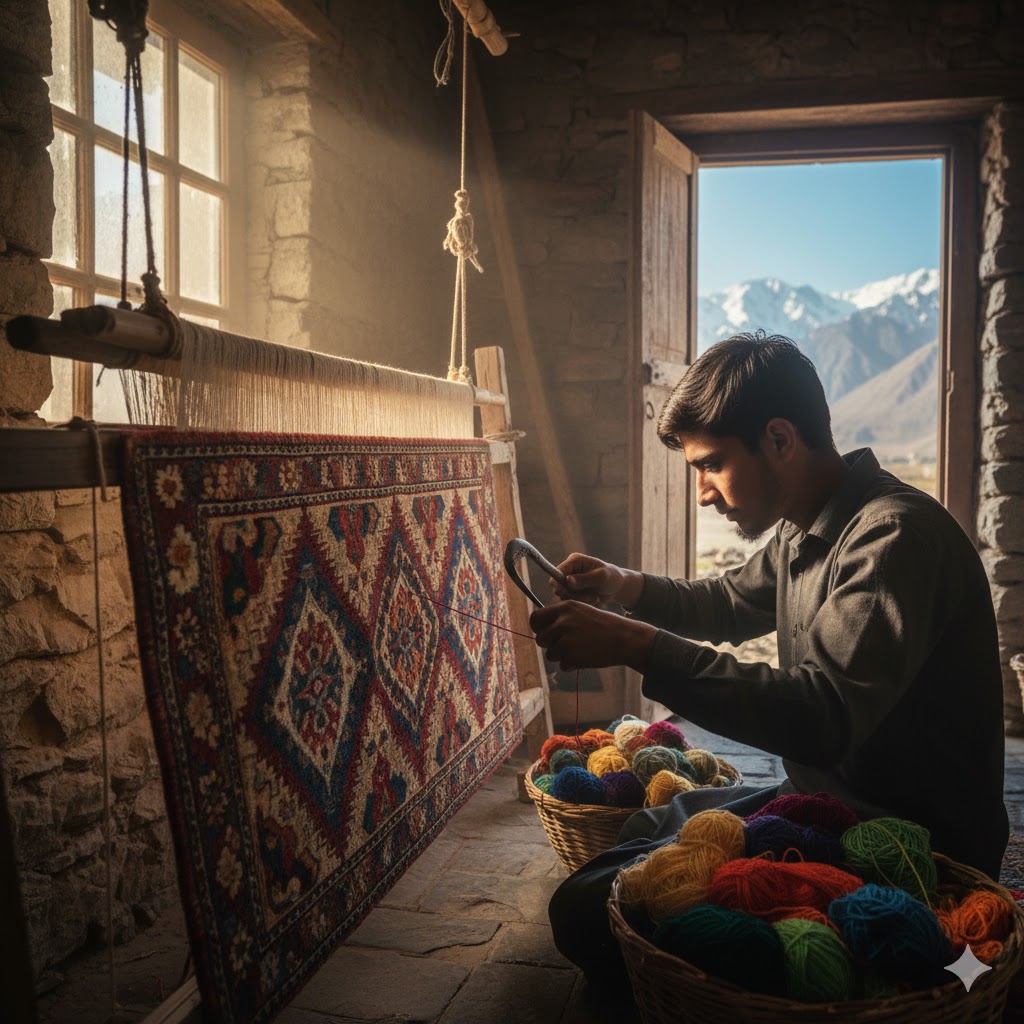
Peshawar – Traditional Jewelry and Leatherwork
Peshawar is famous for silver jewelry, leather bags, and embroidered shoes, reflecting centuries-old trade routes.
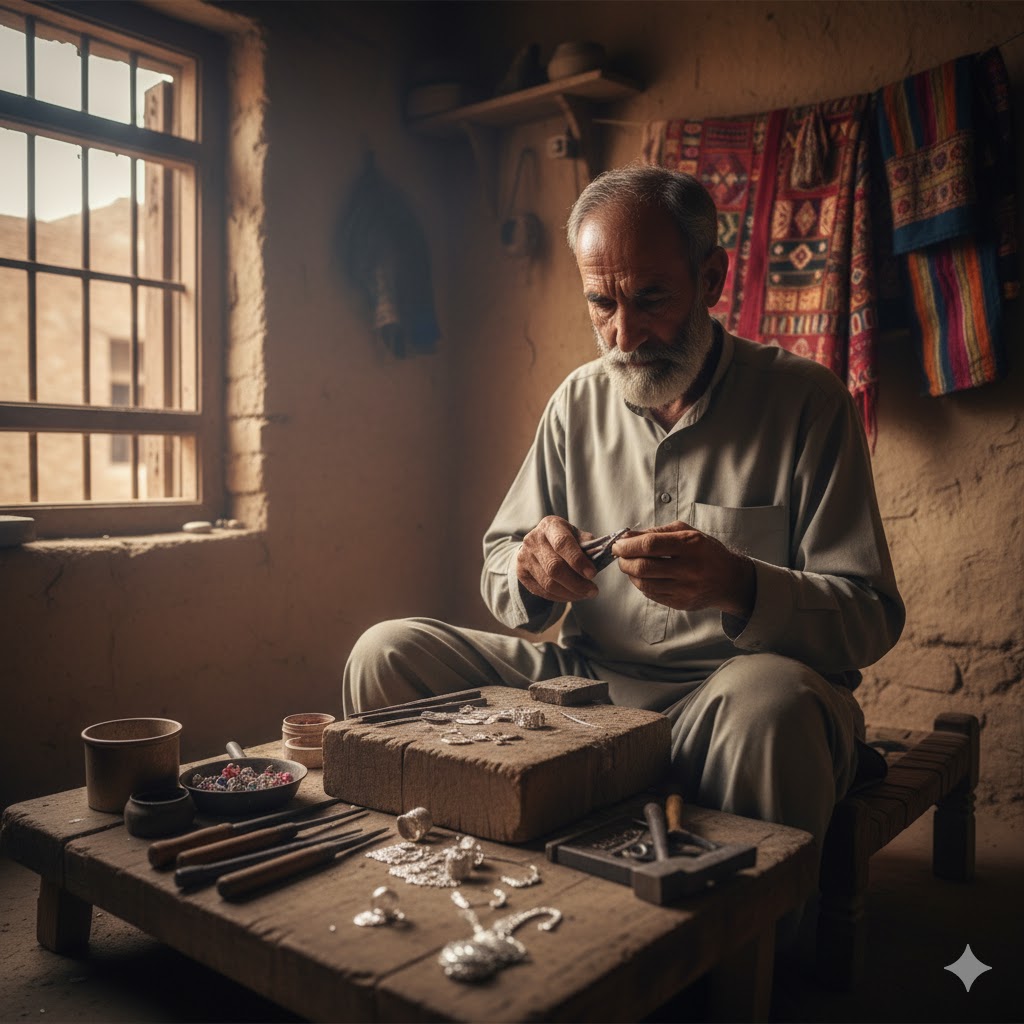
Tips for Visiting Handicraft Villages
- Respect artisan workspace and ask before taking photographs.
- Buy directly from local workshops rather than middlemen.
- Dress modestly and blend in with the community.
- Engage with artisans to learn about cultural symbolism in their work.
- Avoid buying mass-produced items labeled as handmade.
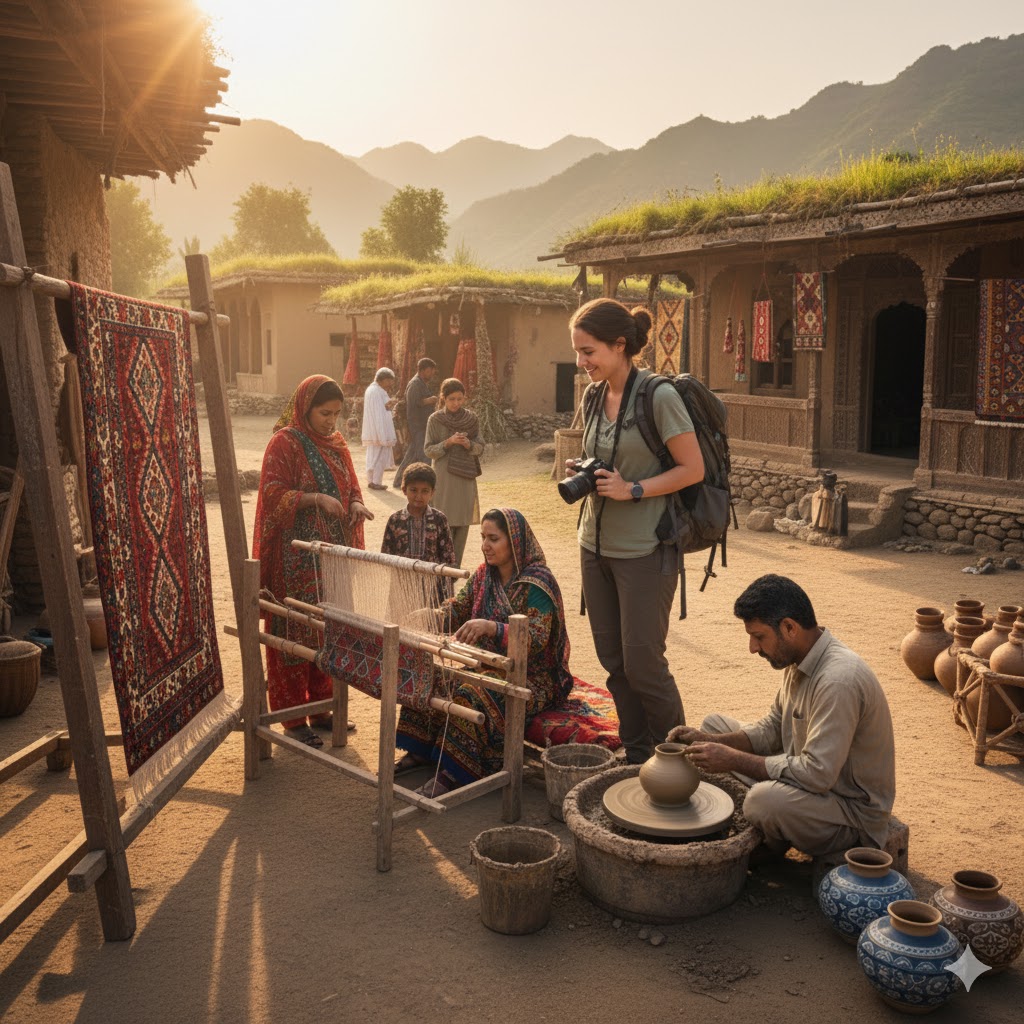
FAQs About Handicraft Villages in Pakistan
Q1: When is the best time to visit?
A: Spring and autumn (March–June, September–October) for comfortable weather and festivals.
Q2: Can tourists participate in craft-making?
A: Yes, most workshops offer hands-on experiences.
Q3: Are all villages easily accessible?
A: Northern villages may require private transport or guided tours due to rugged terrain.
Q4: Can I buy authentic crafts at fair prices?
A: Yes, buying directly from artisans ensures authenticity and fair pricing.
Conclusion
Exploring handicraft villages in Pakistan is more than just shopping for souvenirs—it’s a journey into the heart of the country’s cultural and artistic heritage. From the woven shawls of Shigar to the blue pottery of Multan, the carved wood of Chiniot, and the Ajrak prints of Sindh, every village offers an immersive experience connecting travelers with centuries of tradition.
Support local artisans, learn their stories, and return home with more than a souvenir—you’ll bring back a piece of Pakistan’s living heritage. Plan your 2025 journey now and experience the country’s crafts firsthand.

